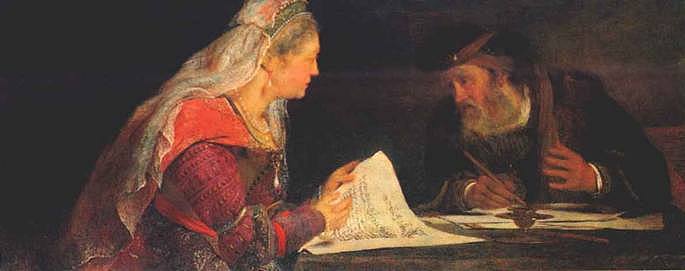Originally posted on The Jew and the Carrot.
Co-written by Nigel Savage, Executive Director, Hazon, and Leah Koenig, writer and cookbook author

Most of us have a sense of the distinct identities of different Jewish holidays. We eat latkes and light candles on Hanukkah; we fast and talk of forgiveness on Yom Kippur. But what we often don’t recognize is the larger framework of the holidays, the way that they connect to each other in an annual cycle of harvest and history. Purim is perhaps the most extreme instance of a holiday which is well-understood in its own terms, but little understood in relation to the season of the year that it inaugurates. Let ‘s look at the key motifs and traditions of Purim, and place them in the longer time frame that helps us understand their deeper purpose.
The most well-known motif of Purim is drunkenness and celebration. One of the Talmud’s more memorable lessons says, “On Purim, a person must drink until s/he cannot tell the difference between, ‘cursed be Haman’ and ‘blessed be Mordechai.'” Many Jews take this lesson, so to speak, religiously, celebrating on Purim to the point of haziness and hangovers.
A second motif is about hiddenness. Much of the Purim story is about hidden identity. Esther’s identity is hidden; Mordechai’s is subsequently revealed. And the name of God is nowhere in the megillah; the rabbis make a pun on this when they speak of hestair panim (a play on the name of Esther) which refers to the hidden face of God. So the Purim story is about masks and costumes, and we continue that tradition to this day.
The question is: what’s the larger purpose? Why exactly do we do this, apart from remembering the story? And how does Purim fit into the larger framework of the Jewish year?
The answer is that Purim is the kick-off for the spring holiday cycle – not just chronologically but also existentially. Purim not only leads to Pesach (and then the counting of the Omer, and Shavuot); Purim is actually necessary in order for us fully to celebrate Pesach.
The weeks following Purim are the perfect time to begin a month-long process of getting rid of our spiritual and emotional chametz. What’s the connection? On Purim night, we blur our normal boundaries of perception. In doing so, we begin to expose the deeper inner truths that can easily stay hidden under the demands of our hectic schedules. Purim brings us out of ourselves. It is the starting gun that jolts us into a new reality. Our challenge is to be open to this gift of perspective with humility and purpose.
Understood in a broader context, the entire period from Purim to Shavuot is a single cycle; the centerpiece of this cluster of holidays is the Pesach seder. Seder night is when we recall and relive the journey our Jewish ancestors took from slavery to freedom. That night, we ourselves are radically free. And in order to be free, in the days and weeks leading up to Pesach, we first must get rid of chametz – both the literal crumbs and also the areas of fluff and superfluity crowding our lives. Preparing for Pesach gives us a chance to sort through our files, examine our relationships, quiet our own egos, and minimize our dependence on material goods. This personal cleansing and the preparation for Pesach are precisely the point of Purim’s overindulgence.
As Pesach approaches, I wish that the joyous energy of Purim carrys forward into the purposive energy of “Purim-to-Pesach” – a time of cleansing our homes and ourselves of so much that is superfluous, and of beginning our journey to freedom.
Photo by Aert de Gelder [Public domain], via Wikimedia Commons
